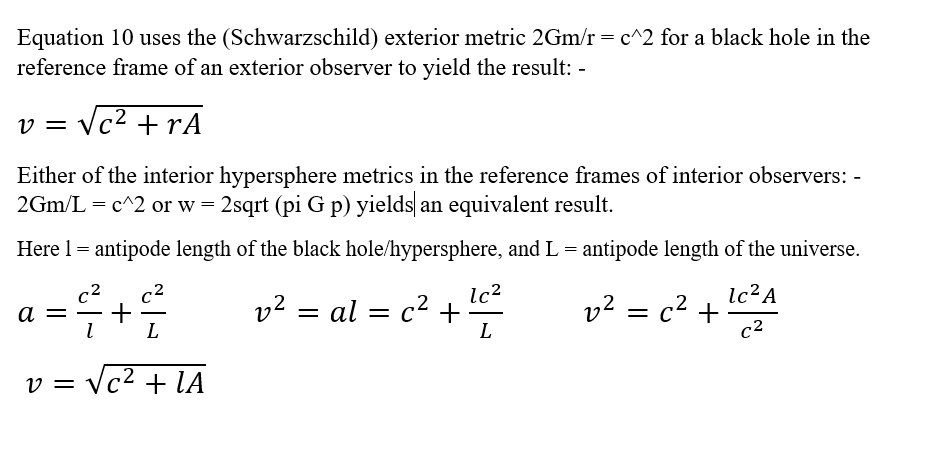
Equation 10
Here we show the modification to Newtonian Dynamics expected in a positively curved spacetime that has a negative acceleration A. Force does not exactly equal mass times acceleration on the very large scale, we have to subtract the very small deceleration.
Substituting this effect into the equation for the acceleration due to gravity we find that it increases that acceleration and also the orbital velocity.
As hyperspheres, black holes have an orbital velocity of lightspeed.
A black hole hypersphere within the hypersphere of the universe will tend to acquire extra orbital velocity from the spacetime curvature of the universe. The effect will increase with the size of the black hole.
Exactly what will happen when the material inside a black hole begins to push up against the lightspeed limit remains an open question, but it seems likely that the hole will begin to shed mass/energy in some form or other.
This predicted effect seems similar to the Hawking Radiation predicted to emerge from smaller black holes.
The effect may prove difficult to observe because large black holes usually remain obscured by dense clusters of stars and large fluxes of radiation from their accretion discs and infalling matter.
